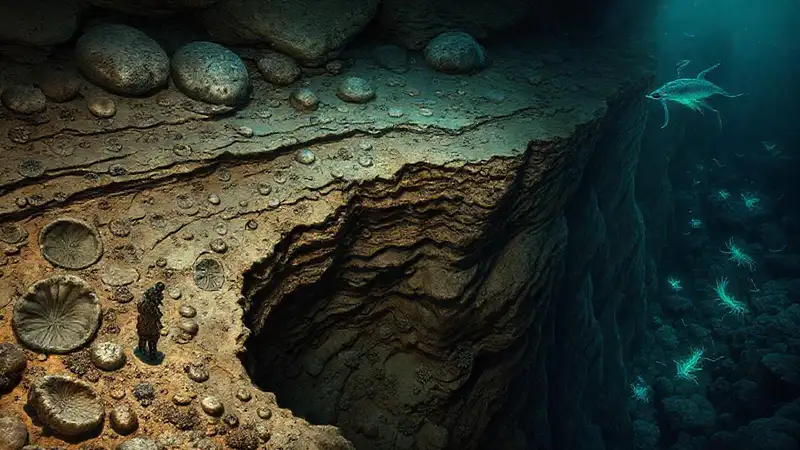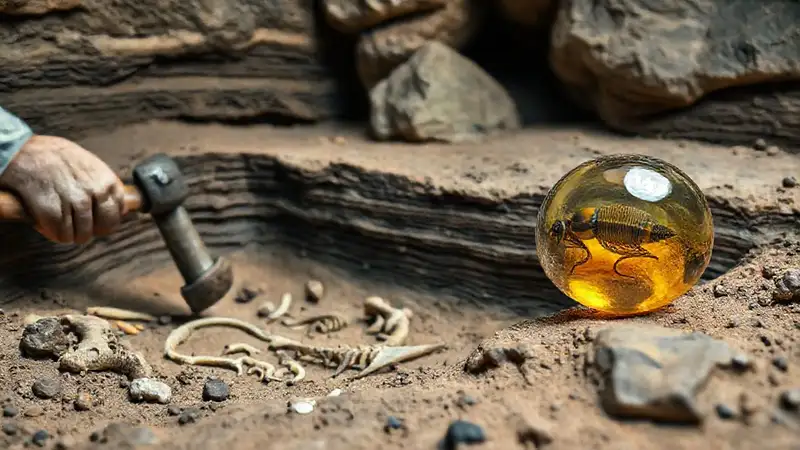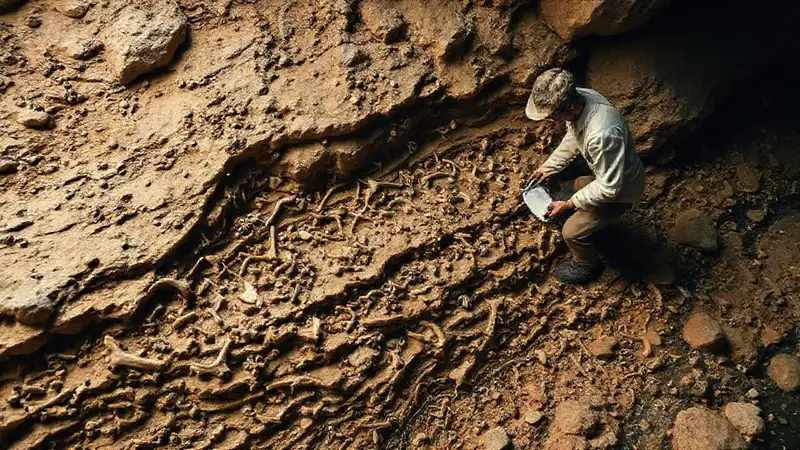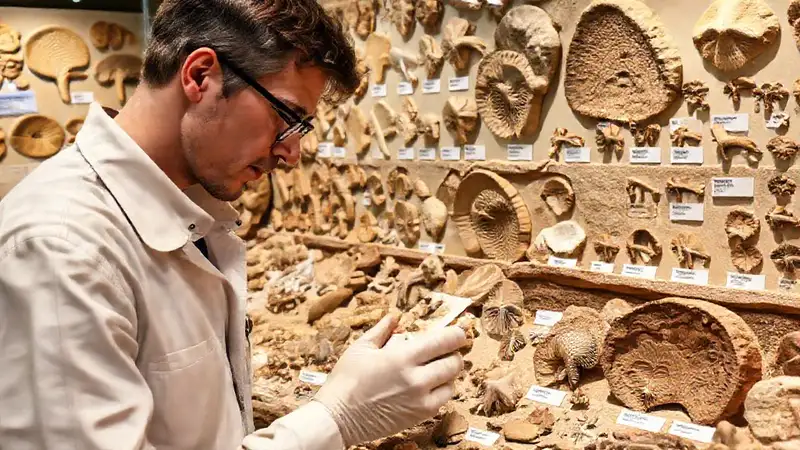Fossilization is a remarkably rare process, and the fact that we have any dinosaur fossils at all is a testament to the extraordinary conditions that must have existed at the time. These preserved remains offer us an unparalleled window into the lives, behaviors, and even the evolutionary history of these magnificent creatures. However, not all fossils are created equal. Scientists categorize fossils into different types, primarily based on their size and the information they provide. Understanding these distinctions – particularly between macrofossils and microfossils – is crucial for paleontologists to accurately interpret the geological record. The study of these ancient remains continues to evolve, unlocking new insights into the prehistoric world.
The diversity of fossil types reflects the variety of environments and preservation methods that occurred during the Mesozoic Era. While large dinosaur skeletons are instantly recognizable, countless other forms of fossilized organisms exist, many of which are far too small to be seen without sophisticated equipment. Successfully identifying and analyzing these different types of fossil material provides researchers with a more complete understanding of ancient ecosystems and allows for a more refined reconstruction of past life on Earth. Essentially, the ability to distinguish between macro and microfossils is fundamental to paleontological research.
The Formation of Macrofossils
Macrofossils, as the name suggests, are large fossils that are easily visible to the naked eye. These are the iconic dinosaur skeletons, teeth, and bones that typically come to mind when people think of fossils. Their formation usually requires significant events to quickly bury and protect the organism from decomposition. Typically, a carcass is rapidly covered by sediment, like volcanic ash or a flood, before scavengers can fully consume it. This swift burial is critical.
The process involves a complex interplay of chemical and physical processes. Initially, the remains undergo autolysis – the self-destruction of cells due to enzymatic activity. Subsequently, mineralization occurs, where the organic material is gradually replaced by minerals like calcium carbonate or silica, effectively transforming the bone into rock. This replacement process is extremely slow, often taking millions of years. Without this transformation, the original organic material would simply decay.
Furthermore, the type of sediment surrounding the fossil plays a crucial role. Fine-grained sediments like mudstone or shale provide the best preservation because they shield the fossil from erosion and weathering, allowing it to remain intact over immense periods of time. The depositional environment – whether it was a riverbed, a coastal area, or a floodplain – directly influences the quality and completeness of the macrofossil record.
Microfossil Preservation: A Different Path
Microfossils, in contrast to their macro counterparts, are incredibly small, typically less than a millimeter in size. They include things like fossilized pollen, spores, plant leaves, insect exoskeletons, and even microscopic bone fragments. Their preservation is generally much more fragile and relies on different mechanisms than macrofossil formation. Unlike bone, these organisms often decompose faster, and preservation is only possible under specific, highly favorable conditions.
A common way microfossils are preserved is through compression. During sediment deposition, the pressure can flatten and imprint the delicate structures of these tiny organisms onto the surrounding rock. This creates a detailed, though two-dimensional, record of their shape and structure. Another method is phosphatization, where the original organic material is replaced by phosphate minerals, forming a thin, stony coating. This process is particularly common in marine microfossils.
The distribution of microfossils provides valuable information about past climates and environments. For instance, the types of pollen found in a fossilized leaf can indicate the prevailing vegetation and climate conditions during that time. Studying these tiny fragments gives us insights into ancient ecosystems that would otherwise be completely lost.
Techniques for Identifying Fossils

Accurately identifying whether a fossil is a macrofossil or a microfossil often requires specialized techniques and expertise. Traditional methods involve careful visual examination, using microscopes to magnify small details and analyze their structure. Paleontologists also employ various imaging techniques, such as X-ray computed tomography (CT scans), which allows them to create 3D models of fossils without damaging them.
More advanced methods include geochemical analysis, which can reveal information about the fossil’s composition and the environment in which it formed. Furthermore, using cladistics, a method of phylogenetic analysis, allows scientists to determine the evolutionary relationships between fossilized organisms, providing context for their place in the broader evolutionary history. The meticulous process of fossil identification is critical for accurately interpreting the paleontological dataset.
Finally, digital photography and 3D modeling are increasingly used to document and study fossils. These tools allow for detailed analysis and sharing of information with researchers around the world, accelerating the pace of scientific discovery. The increasing sophistication of these technologies improves our ability to study and understand ancient life.
The Significance of Fossil Diversity
Recognizing the differences between macro and microfossils underscores the importance of a holistic approach to paleontology. Each type of fossil provides a unique piece of the puzzle, contributing to a more complete picture of the past. Ignoring either category would significantly limit our understanding of prehistoric life.
Furthermore, the discovery and analysis of both macro and microfossils continually refine our understanding of evolutionary relationships and ancient ecosystems. New fossil finds, especially microfossils, often lead to revisions of existing hypotheses and open up new avenues of research. The ongoing exploration of the fossil record is a powerful tool for unraveling the mysteries of our planet's history and continues to offer exciting new discoveries about the dinosaurs and the world they inhabited.
Conclusion
In summary, understanding the distinction between macro and microfossils is central to paleontological investigation. The size, preservation methods, and the types of information each provides are fundamentally different, demanding specialized techniques for identification and analysis. Each category contributes uniquely to our understanding of the Mesozoic Era.
Ultimately, the study of dinosaur fossils, regardless of their size, provides invaluable insights into the history of life on Earth. The continued exploration of the fossil record promises to unveil even more secrets about these magnificent creatures and the world they inhabited, reinforcing the vital role of paleontology in shaping our comprehension of the planet’s past and future.
 How do marine environments contribute to fossilization
How do marine environments contribute to fossilization What processes alter fossils after death and burial
What processes alter fossils after death and burial How does *Guanlong*’s morphology illuminate theropod origins
How does *Guanlong*’s morphology illuminate theropod origins Explain the concept of ‘ground-up’ fossilization
Explain the concept of ‘ground-up’ fossilization What is the process of fossilization, step by step
What is the process of fossilization, step by step How do fossilization processes influence bonebed records
How do fossilization processes influence bonebed records
Deja una respuesta